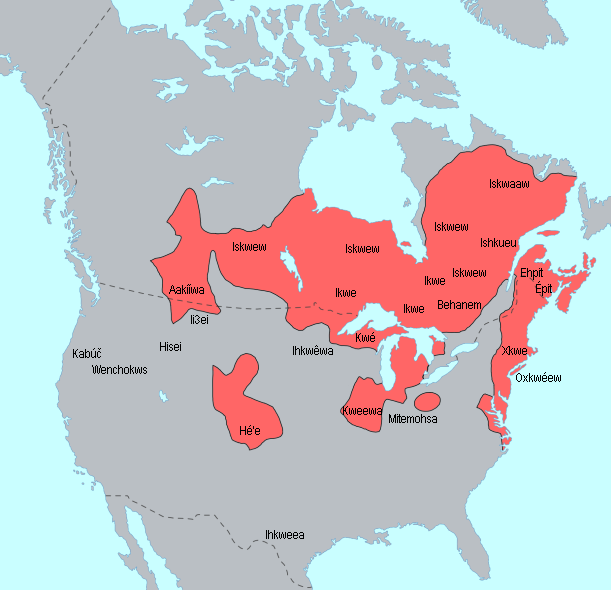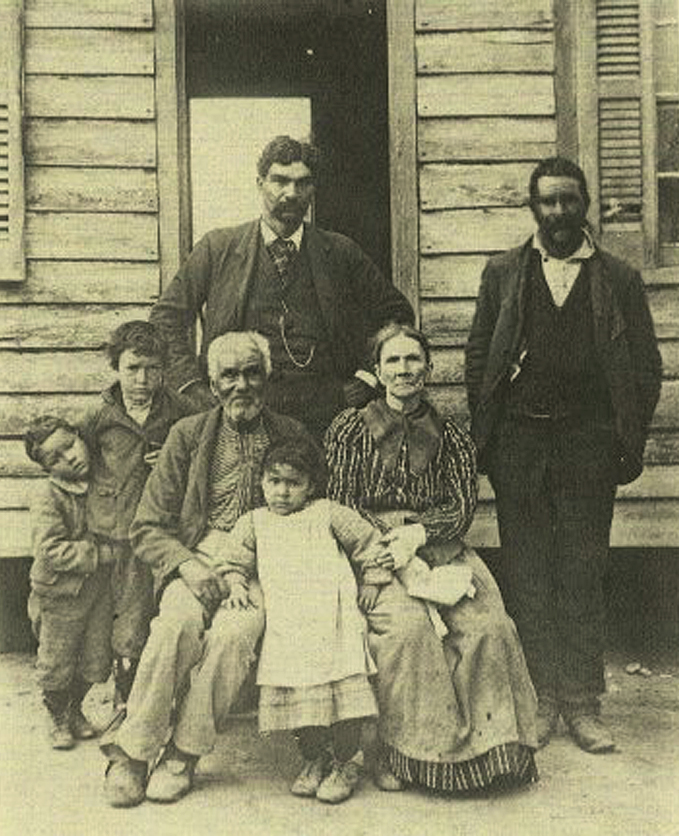|
Nansemond Language
The Nansemond language is an extinct language that was spoken by the Nansemond people of Virginia, United States. The Nansemond language may have been a member of the Algonquian language family, similar to that of many other Atlantic coastal tribes. However, only six words have been preserved, which are not enough to identify and classify it. Word list The six Nansemond words, which may have been corrupted in memory by the time they were written down in 1901, are:''A Vocabulary of Powhatan, compiled by Captain John Smith, with two word-lists of Pamunkey and Nansemond from other sources.'' Evolution Publishing, 1997. : Lexical comparison Below is a comparison of Nansemond words and selected proto-languages from Zamponi (2024). : See also *Pamunkey language The Pamunkey language is an extinct language that was spoken by the Pamunkey people of Virginia, United States. The Pamunkey language is generally assumed to have been Algonquian. However, only fourteen words have been pr ... [...More Info...] [...Related Items...] OR: [Wikipedia] [Google] [Baidu] |
United States
The United States of America (USA), also known as the United States (U.S.) or America, is a country primarily located in North America. It is a federal republic of 50 U.S. state, states and a federal capital district, Washington, D.C. The 48 contiguous states border Canada to the north and Mexico to the south, with the semi-exclave of Alaska in the northwest and the archipelago of Hawaii in the Pacific Ocean. The United States asserts sovereignty over five Territories of the United States, major island territories and United States Minor Outlying Islands, various uninhabited islands in Oceania and the Caribbean. It is a megadiverse country, with the world's List of countries and dependencies by area, third-largest land area and List of countries and dependencies by population, third-largest population, exceeding 340 million. Its three Metropolitan statistical areas by population, largest metropolitan areas are New York metropolitan area, New York, Greater Los Angeles, Los Angel ... [...More Info...] [...Related Items...] OR: [Wikipedia] [Google] [Baidu] |
Virginia
Virginia, officially the Commonwealth of Virginia, is a U.S. state, state in the Southeastern United States, Southeastern and Mid-Atlantic (United States), Mid-Atlantic regions of the United States between the East Coast of the United States, Atlantic Coast and the Appalachian Mountains. The state's List of capitals in the United States, capital is Richmond, Virginia, Richmond and its most populous city is Virginia Beach, Virginia, Virginia Beach. Its most populous subdivision is Fairfax County, Virginia, Fairfax County, part of Northern Virginia, where slightly over a third of Virginia's population of more than 8.8million live. Eastern Virginia is part of the Atlantic Plain, and the Middle Peninsula forms the mouth of the Chesapeake Bay. Central Virginia lies predominantly in the Piedmont (United States), Piedmont, the foothill region of the Blue Ridge Mountains, which cross the western and southwestern parts of the state. The fertile Shenandoah Valley fosters the state's mo ... [...More Info...] [...Related Items...] OR: [Wikipedia] [Google] [Baidu] |
Algonquian Languages
The Algonquian languages ( ; also Algonkian) are a family of Indigenous languages of the Americas and most of the languages in the Algic language family are included in the group. The name of the Algonquian language family is distinguished from the orthographically similar Algonquin dialect of the Indigenous Ojibwe language (Chippewa), which is a senior member of the Algonquian language family. The term ''Algonquin'' has been suggested to derive from the Maliseet word (), meaning 'they are our relatives/allies'. Speakers of Algonquian languages stretch from the east coast of North America to the Rocky Mountains. The proto-language from which all of the languages of the family descend, Proto-Algonquian, was spoken around 2,500 to 3,000 years ago. There is no scholarly consensus about where this language was spoken. Family division This subfamily of around 30 languages is divided into three groups according to geography: Plains, Central, and Eastern Algonquian. Of t ... [...More Info...] [...Related Items...] OR: [Wikipedia] [Google] [Baidu] |
Nansemond
The Nansemond are the Indigenous people of the Nansemond River, a 20-mile-long tributary of the James River in Virginia. Nansemond people lived in settlements on both sides of the Nansemond River where they fished (with the name "Nansemond" meaning "fishing point" in Algonquian), harvested oysters, hunted, and farmed in fertile soil. Today, Nansemond people belong to the federally recognized Nansemond Indian Nation. Gradually pushed off their lands in the colonial and following periods, the Nansemond struggled to maintain their culture. They reorganized in the late 20th century and gained state recognition from Virginia in 1985. They gained federal recognition in 2018 after Congress passed a bill. Many members of the tribe still live on former ancestral lands in Suffolk, Chesapeake, and surrounding cities. Language The Nansemond language is believed to have been Algonquian, similar to that of many other Atlantic coastal tribes. But only six words have been preserved, which ... [...More Info...] [...Related Items...] OR: [Wikipedia] [Google] [Baidu] |
Proto-language
In the tree model of historical linguistics, a proto-language is a postulated ancestral language from which a number of attested languages are believed to have descended by evolution, forming a language family. Proto-languages are usually unattested, or partially attested at best. They are reconstructed by way of the comparative method. In the family tree metaphor, a proto-language can be called a mother language. Occasionally, the German term ' (; from 'primordial', 'original' + 'language') is used instead. It is also sometimes called the ''common'' or ''primitive'' form of a language (e.g. Common Germanic, Primitive Norse). In the strict sense, a proto-language is the most recent common ancestor of a language family, immediately before the family started to diverge into the attested ''daughter languages''. It is therefore equivalent with the ''ancestral language'' or ''parental language'' of a language family. Moreover, a group of lects that are not considered separate ... [...More Info...] [...Related Items...] OR: [Wikipedia] [Google] [Baidu] |
Proto-Algonquian
Proto-Algonquian (commonly abbreviated PA) is the proto-language from which the various Algonquian languages are descended. It is generally estimated to have been spoken around 2,500 to 3,000 years ago, but there is less agreement on where it was spoken. The Algonquian family, which is a branch of the larger Algic language family, is usually divided into three subgroups: Eastern Algonquian, which is a genetic subgroup, and Central Algonquian and Plains Algonquian, both of which are areal groupings. In the historical linguistics of North America, Proto-Algonquian is one of the best studied, most thoroughly reconstructed proto-languages. It is descended from Proto-Algic. History of research Most Algonquian languages are similar enough that their relatedness has been recognized for centuries and was commented on by the early English and French colonists and explorers. For example, in 1787 (over a decade before Sir William Jones' famous speech on Indo-European), the theologian ... [...More Info...] [...Related Items...] OR: [Wikipedia] [Google] [Baidu] |
Proto-Iroquoian
Proto-Iroquoian is the theoretical proto-language of the Iroquoian languages. Lounsbury (1961) estimated from glottochronology a time depth of 3,500 to 3,800 years for the split of North and South Iroquoian. At the time of early European contact, French explorers in the 16th century encountered villages along the St. Lawrence River, now associated with the St. Lawrence Iroquoian. Other better known northern tribes took over their territory and displaced them, and were later encountered by more French, European and English colonists. These tribes included the Huron and Neutral in modern-day Ontario, first encountered by French explorers and traders; the Five Nations of the Iroquois League in Upstate New York and Pennsylvania, and the Erie Nation and Susquehannock peoples in Pennsylvania. Southern speakers of Iroquoian languages ranged from the Cherokee in the Great Smoky Mountains, to the Tuscarora and Nottoway in the interior near the modern Virginia/North Carolina border ... [...More Info...] [...Related Items...] OR: [Wikipedia] [Google] [Baidu] |
Proto-Siouan
The Proto-Siouan language, sometimes known as the Proto-Siouan–Catawban language, is the reconstructed ancestor of the Siouan languages. Although the attested daughter languages are largely native to the Great Plains region of the United States and Canada, Proto-Siouan is believed to have been originally spoken in and around the Ohio River Valley between 3000 BC and 2000 BC before splitting off into the Eastern and Western Siouan languages. Siouan-speaking peoples were eventually displaced or assimilated after losing series of wars of conquest against their northern Iroquois neighbors during the 17th century, though their origins along the American Eastern Seaboard are supported by toponymic and onomastic data. Proto-Siouan phonology comprised a five oral and three nasal vowel system each distinguishable by length and a complex set of consonants with a four-way stop distinction. The language also distinguished between at least two tones, high and non-high, though a falling ... [...More Info...] [...Related Items...] OR: [Wikipedia] [Google] [Baidu] |
Pamunkey Language
The Pamunkey language is an extinct language that was spoken by the Pamunkey people of Virginia, United States. The Pamunkey language is generally assumed to have been Algonquian. However, only fourteen words have been preserved, which is not enough to determine that the language actually was Algonquian. Word list The only attested Pamunkey words, which were recorded in 1844 by Reverend E.A. Dalrymple S.T.D., are: : Lexical comparison Below is a comparison of Pamunkey words and selected proto-languages from Zamponi (2024). : Except for ''nikkut'' 'one', which is clearly similar to Powhatan ''nekut'', none of the words correspond to any known Algonquian language, or to reconstructions of proto-Algonquian Proto-Algonquian (commonly abbreviated PA) is the proto-language from which the various Algonquian languages are descended. It is generally estimated to have been spoken around 2,500 to 3,000 years ago, but there is less agreement on where it was .... Given the extensive e ... [...More Info...] [...Related Items...] OR: [Wikipedia] [Google] [Baidu] |
Unclassified Languages Of North America
Classified information is confidential material that a government deems to be sensitive information which must be protected from unauthorized disclosure that requires special handling and dissemination controls. Access is restricted by law or regulation to particular groups of individuals with the necessary security clearance with a need to know. A formal security clearance is required to view or handle classified material. The clearance process requires a satisfactory background investigation. Documents and other information must be properly marked "by the author" with one of several (hierarchical) levels of sensitivity—e.g. Confidential (C), Secret (S), and Top Secret (S). All classified documents require designation markings on the technical file which is usually located either on the cover sheet, header and footer of page. The choice of level is based on an impact assessment; governments have their own criteria, including how to determine the classification of an informat ... [...More Info...] [...Related Items...] OR: [Wikipedia] [Google] [Baidu] |
Extinct Languages Of North America
Extinction is the termination of an organism by the death of its last member. A taxon may become functionally extinct before the death of its last member if it loses the capacity to reproduce and recover. As a species' potential range may be very large, determining this moment is difficult, and is usually done retrospectively. This difficulty leads to phenomena such as Lazarus taxa, where a species presumed extinct abruptly "reappears" (typically in the fossil record) after a period of apparent absence. Over five billion species are estimated to have died out. It is estimated that there are currently around 8.7 million species of eukaryotes globally, possibly many times more if microorganisms are included. Notable extinct animal species include non-avian dinosaurs, saber-toothed cats, and mammoths. Through evolution, species arise through the process of speciation. Species become extinct when they are no longer able to survive in changing conditions or against superio ... [...More Info...] [...Related Items...] OR: [Wikipedia] [Google] [Baidu] |






